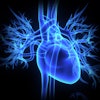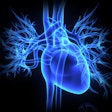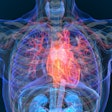Monday, November 27 | 11:00 a.m.-11:10 a.m. | SSC03-04 | Room S504CD
A U.K. team has found that deep learning-powered computer-aided detection software could potentially act as a second reader for chest radiographs.Chest x-rays are the most commonly performed diagnostic imaging study, but picking out subtle findings on these exams can be difficult. Sometimes when lung cancer is diagnosed, a nodule was visible on prior imaging with the benefit of hindsight, said Dr. Samuel Withey of Guy's and St. Thomas' NHS Foundation Trust in London.
"Detecting cancers earlier allows a better chance of there being curative treatment options," Withey noted.
Implementing double reading of x-rays isn't feasible due to the sheer number of studies being performed. As a result, the researchers sought to use their access to a large database of images and corresponding reports with the hope of improving nodule detection compared with other leading artificial intelligence (AI) algorithms.
"We eventually hope that an effective AI system will be able to act as a second reader, improving a radiologist's sensitivity for nodule detection on plain film," he said.
Their computer-aided detection (CAD) system was trained using more than 700,000 chest x-ray exams, along with a small subset of images that included radiologist-annotated boxes around nodules.
"Combining these [databases], we demonstrated superior nodule detection compared with other previously documented methodologies," Withey told AuntMinnie.com. "We think this represents another step forward for machine learning in diagnostic radiology."
Learn more by taking in this presentation on Monday morning.




















